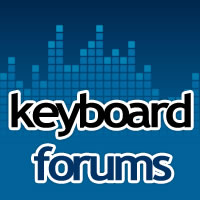Do read other threads and search the forum for answers as many questions asked have been asked before and the answers are there.
Hello to all the music fraternity, mentors and experts. I am struggling long time now with the problem of playing the chords correctly at the required places while playing any song or melody. I am confident of the chords / melody when played separately, but when I play songs & chords together...

www.keyboardforums.com
There is no right or wrong way to learn to play keys, there is what works for you.
Typically the advice given about learning is to start slow and speed will build up in time, the downside is you are training muscle memory and not necessarily technique.
Forget about chord inversions for now and play and hold a C chord on your keyboard, count the number of keys between each finger. Now play an A chord and again count the number of unplayed keys between each finger. You will find they are the same hence you have learned the pattern for major chords.
Repeat the exercise for Minor, Seventh and Diminished chords and you have cracked learning chords in their root positions.
Then look at and practice chord inversions.
Then learn about Chord progressions in songs and there are thousands that follow a simple 1, 4, 5 format.
A progression will be in a form such as:- 1 M, 2 m, 3 m, 4 M, 5 M, 6 m, 7 D
You will get there just keep practicing and learning.

